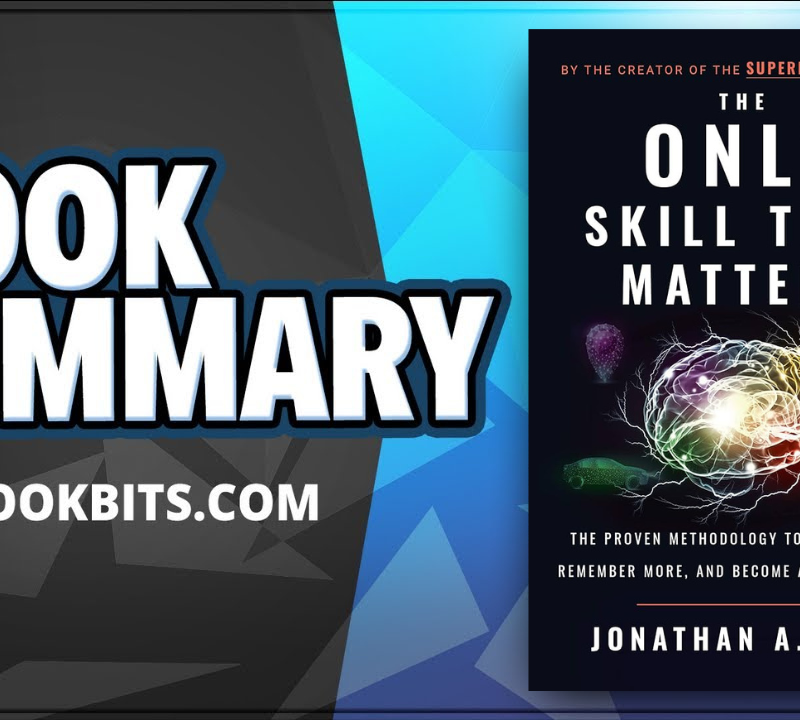★DOWNLOAD THIS FREE PDF SUMMARY HERE https://go.bestbookbits.com/freepdf
? MY FREE BOOK TO LIVING YOUR DREAM LIFE” https://go.bestbookbits.com/first-seven-steps
? SPONSOR BESTBOOKBITS BY USING PATREON https://www.patreon.com/bestbookbits
? SUPPORT BESTBOOKBITS BY CLICKING THE LINKS BELOW
150 PDF Summaries: https://go.bestbookbits.com/150
Coaching Program: https://go.bestbookbits.com/coaching
Subscribe to My Channel: https://www.youtube.com/bestbookbits?sub_confirmation=1
Website: https://bestbookbits.com
Instagram: https://www.instagram.com/bestbookbits
Spotify: https://open.spotify.com/show/0q8OW3dNrLISzyRSEovTBy
Facebook: https://www.facebook.com/michaelbestbookbits
Book Club: https://bestbookbits.com/bookclub/
Mailing List: https://mailchi.mp/d1dfc1907cdb/bestbookbits
Ever since Google was born in 1998, the company has become one of the most valuable and successful companies in the tech world. But despite having a net worth of hundreds of billions and 15 years of history, the company still maintains a startup mentality. How does Google achieve that? By focusing on so-called smart-creatives. Smart-creatives are employees who possess a curious, ambitious personality and combine it with their tech know-how.
Smart-creatives
The technological advancement over the past few decades has brought a highly competitive market. With the rise of the internet, consumers became increasingly more demanding, as they could easily compare prices and quality (reviews) of products. So companies had to adjust and produce better products to stand out.
The second effect of the tech explosion is that companies could develop products very quickly and cost-effectively. Digital products scale incredibly well, which is why a tiny group of engineers can produce a product used by millions of peoples. It is also easy to outsource work over the internet for very competitive prices.
For those reasons, successful companies need to rely on employees who can give them a competitive edge. These employees are called smart-creatives by Google. Smart-creatives combine ideas from different areas. They combine business and tech expertise in a creative way. They are competitive, curious and very ambitious. So ambitious that they will even ignore direct orders just to prove a point. They are so passionate about their work that they will have no problem pulling all-nighters.
The hiring approach then is to bring in those types of engineers and giving them as much freedom as possible. Letting their intrinsic motivation free flow. Smart-creatives are the essence of Google. They possess the same nerdy characteristics of the founders Larry Page and Sergey Brin themselves.
We know that quality employees are the engine of a successful business, so they should be a top priority. But how can companies and organizations hire those talents?
How to hire smart-creatives
Hiring should be a top priority. So instead of relying on just a single opinion of a manager, as it is the case in most companies, you should create a committee to represent the company’s different viewpoints, a committee could consist of an engineer, a manager and a salesperson for example.
The standard procedure, of course, is reviewing the candidate’s resume, but resumes aren’t the best way to find the most interesting and intelligent employees. Finding them requires imagination, Google’s CEO Eric Schmidt asks himself this question before making any hiring decision: If he were stuck at an airport with the prospective employee, would they be able to hold an interesting conversation?
But the main question is, how can a company attract those types of employees? It seems like a good paycheck would be the wrong motivator, as smart-creatives are mostly intrinsically motivated.
Building a creative, free-thinking company-culture
To attract smart and creative people, you have to create a company culture which attracts those types of employees. The culture should encourage interaction (as smart people love to talk to other smart people), freedom (smart-creatives don’t like to be in a rigid environment).
Employees should be able to speak their mind and have freedom to make their own decisions. A good starting point to define the company culture is to create the guidelines and principles, Google, for example, outlined: “Don’t be evil” and “Make the world a better place.”
A good way to test your company’s culture is by making an indirect remark about something, directed to no one in particular. Larry Page did exactly that in 2002 when he found some ads he didn’t like on a Google search page. He left a printed note on a bulletin board in the company’s kitchen with the caption, “THESE ADS SUCK.”
In a common company culture employees would have perhaps thought it as a funny remark, but as no one in particular was addressed perhaps everyone would’ve thought that fixing it is the responsibility of someone else. At Google however, a team of engineers who saw Page’s note on a Friday, committed to fixing the problem during their own free time on over a weekend, although they weren’t responsible for the ads.
This kind devotion is not the norm in every company and can only be achieved by attracting intrinsically motivated employees.
Create a climate for innovation
Enforcing innovation rarely works because external motivators are harmful to intrinsic motivation as described in Drive. How can a company then encourage innovation? You create the conditions for innovation to flourish.
One of Google’s employees was “Head of Innovation at Yahoo” before he joined Google. The reason he quit Yahoo was that his 12-year-old daughter pointed out that wasting an engineer’s precious time by lecturing him on innovation wasn’t very innovative in itself.
So how can we create the right conditions for innovation? One simple rule is trying to shoot for bigger goals by “10xing” everything. For example, striving for a product which is 10 times better and has only 1/10 the cost of its current alternative.
Embrace risk. Google dedicates 10 percent of its budget to experiments. Employees have 20% free time to spend on whatever they like. Thanks to these measures innovation keep moving. Gmail for example was a result of an employee’s 20-percent time.
Create open spaces for collaboration
We learned from the book Where good ideas come from that they come from collaborating environments. Innovative companies foster this type of rich environment by creating collaborative working environments and company-wide meetings.
At Google, quarterly company reports aren’t just presented to the boards of directors but at the whole company. Additionally, the intranet called Moma stores every single product in development so that every employee knows what everyone else is working on. This makes it easier for employees to collaborate and share knowledge, even across different departments.
Company-wide meetings ensure further ensures collaboration. Every employee has the opportunity to submit questions and upvote other questions before a meeting takes place.
The pro-openness policies allow employees to start conversations, one employee for example wrote a “user manual” for colleagues on how to work with him in the most effective way.
Retaining good employees
The restless and ambitious nature of smart creatives will naturally lead them to create something of their own sooner or later or at least make a change and try something new, like going to another company. So how can you retain them? The answer is, by giving them what they most crave, intellectual challenges.
If you challenge smart creative’s intellect, they will feel stimulated and more motivated, keeping them happy and away from the thoughts of leaving the company.
Google’s Schmidt convinced an employee to stay for two more years at Google by inviting him to participate in the top meetings with founders. These meetings allowed him to learn new things and as a result, he stayed much longer.
Leaving room for change
How to assure long-term success? Most CEOs would think that their company needs a business plan. But a rigid business plan in fact isn’t going to work well in most situations. A fixed plan doesn’t leave room for fine-tuning. And in the technology business, things change all the time. A company needs to be able to react quickly to adapt to new situations.
That’s why a such a company is better off by certain principles. A collection of principles to apply depending on the situation, provide a much more flexible outline than a static plan. This type of strategy is called strategic foundation.
Jonathan Rosenberg noticed the needs for a special plan rather than an MBA-style business plan in 2002 when he joined Google, which is why he developed the following, more general guide consisting of three points for success.
Every new product should be based on a great technical insight and should either increase the functionality of that product or lower its cost.
Concentrate on fast growth and scale. Scaling globally will prevent competitors from copying and catching up with their product.
Be open, share your information with the world whenever possible.
Enforce discussions instead of decisions
In a traditional company, management uses to be hierarchical (vertical). That means that decisions are to be made from superiors and that they are not debated openly, employees have to shut up and follow orders from their superiors.
This is not how things work at companies with smart, creative cultures. The decision making in such a company is more horizontal than in traditional companies. Decisions are debated openly. Management cannot just make up their minds about something expecting everyone to follow the orders. If employees don’t support the decision, they won’t follow it.
Founder Sergey Brin once disagreed over a point with an engineer, instead of forcing him to along with his decision, he proposed that half the team followed the engineer’s decision and half the team his own. Even then, the engineer wasn’t satisfied, and the whole team ended up following his solution, not Brin’s.
This type of focus on decision making is effective because it involves more people and thus more brains, and it ensures that employees will support the final decision.
Another example, once Eric Schmidt, Larry Page and Sergey Brin all disagreed on a new product feature. In the end, they came up with another, even better solution.
To create a similar decision making in your company you should embrace and create ways to consider every opinion and position of your employees. The manager should enforce discussion instead of decisions.
The only thing in consensus can be the timing, as discussions can take time. The focus then should be to leave enough room for discussion. For example, when Google was considering a deal with AOL in 2002, Schmidt recognized the impact on such a decision and arranged daily meetings on the issue for six weeks. By this move, he ensured that the discussion would take place and that it would finish within the appropriate timeframe.
Tosum it up: The company culture defines the company’s success. So focusing oncreating the right culture and conditions can be the primal way to thelong-term success of a company.
★DOWNLOAD THIS FREE PDF SUMMARY HERE https://go.bestbookbits.com/freepdf
? MY FREE BOOK TO LIVING YOUR DREAM LIFE” https://go.bestbookbits.com/first-seven-steps
? SPONSOR BESTBOOKBITS BY USING PATREON https://www.patreon.com/bestbookbits
? SUPPORT BESTBOOKBITS BY CLICKING THE LINKS BELOW
150 PDF Summaries: https://go.bestbookbits.com/150
Coaching Program: https://go.bestbookbits.com/coaching
Subscribe to My Channel: https://www.youtube.com/bestbookbits?sub_confirmation=1
Website: https://bestbookbits.com
Instagram: https://www.instagram.com/bestbookbits
Spotify: https://open.spotify.com/show/0q8OW3dNrLISzyRSEovTBy
Facebook: https://www.facebook.com/michaelbestbookbits
Book Club: https://bestbookbits.com/bookclub/
Mailing List: https://mailchi.mp/d1dfc1907cdb/bestbookbits













